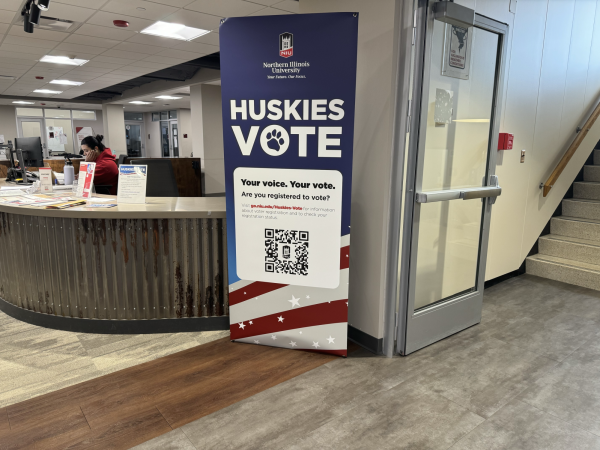Enrollment reflects state-wide trend
October 29, 1993
NIU’s drop in enrollment this year reflects a continued state-wide trend of high school students deciding not to attend a college or university after graduation.
Total enrollment for public and private colleges and universities in the state is down 1.5 percent, a drop of 11,000 students, according to an article in Thursday’s Chicago Sun-Times.
Robert Burk, associate director of admissions at NIU, said the state-wide drop in new freshman enrollment is partly caused by a decline in the number of college-bound students interested in pursuing business degrees.
The drop in enrollment in the business school reflects a nationwide trend, Burk said. “Many people think of business when they think of NIU. We are trying to make potential students aware of all the opportunities at NIU, like our strong Liberal Arts and Sciences school,” he said.
NIU administrators have in the past cited the “baby bust” theory for a drop in enrollment, however, the number of Illinois high school graduates rose this year, after three years of a steady decline.
“Many high school seniors are just opting not to go to college after graduation, which also affects enrollment,” Burk said.
Other schools in the state also have been affected by the lack of graduating seniors attending universities.
Northeastern Illinois had a 24.9 percent decrease in enrollment this fall. Freshman numbers were down 12.1 percent at Illinois State University and 10.7 percent at the Southern Illinois University at Carbondale.
Chicago State, however, increased enrollment by 10.8 percent, and many private colleges around the state also increased freshman enrollment.
Rey Brune, chair of the Affordability Committee of the Illinois Board of Higher Education, said, “Decline over all colleges in the state is due to demographics.”
Previous blame has been placed on the IBHE’s Priorities, Quality and Productivity initiative. The thought was, if programs were considered for elimination, less students would want to attend the school.
“I don’t think PQP causes loss of enrollment because there hasn’t been any elimination of programs yet,” Brune said.
PQP has not called for many cuts in the undergraduate program, Brune said. “PQP calls for strengthening undergraduate programs. Anyone who blames the drop of enrollment on PQP is smoking a pipe or something,” he said.
NIU has been intentionally down sizing enrollment for the past three years, in an effort to better match available resources with the current number of students. However, NIU expected the enrollment to stabilize this year, and instead, figures continued to decrease.
“We expected the trend to bottom out last year, and it didn’t,” Burk said. “There are just fewer students attending college right now.”
The targeted enrollment for next year is roughly 25,000, Burk said, and that is the number at which enrollment figures are expected to stabilize.
Despite the across-the-board drop in NIU’s enrollment this year, minority enrollment has increased this fall, while NIU had 754 fewer white undergraduates.
“We hope the minority trend continues. Hopefully minority students will go to a university, whether NIU or some other institution,” Burk said.
NIU will not lower requirements for admissions if the enrollment continues to fall, Burk said. He noted that some universities do lower requirements to make up for the drop.
“When there are fewer people out there, they will adjust their admissions requirement. At the University of Illinois at Champaign, lowering one percent could mean 1,000 more people,” Burk said.
“We are trying to encourage more students that are college-bound to come to NIU. We are getting the message across,” Burk said.












